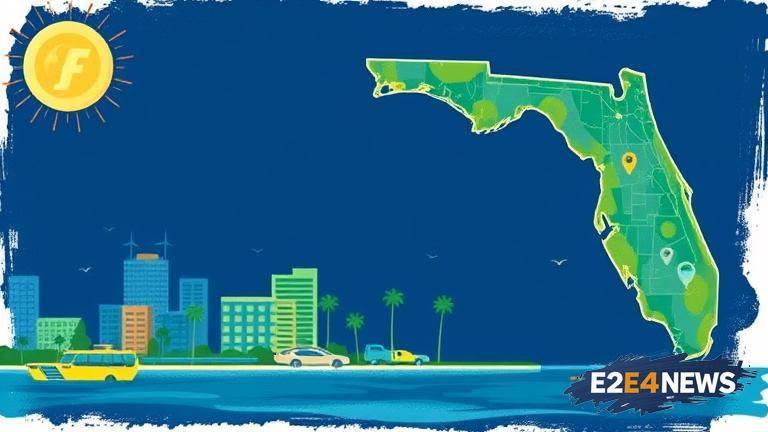Florida, known for its beautiful beaches and vibrant cities, is facing significant challenges in the face of rising costs and climate change. With sea levels projected to rise by up to 10 inches by 2030, cities across the state are exploring innovative solutions to protect their communities and infrastructure. One such city is Miami, which is investing heavily in sea walls and flood protection measures to safeguard its residents and businesses. Meanwhile, other cities like Tampa and St. Petersburg are focusing on green infrastructure, such as parks and green roofs, to help mitigate the effects of extreme weather events. The city of Fort Lauderdale is also taking a proactive approach, with plans to build a massive sea wall to protect its coastal neighborhoods. However, these efforts come at a significant cost, with some estimates suggesting that the total bill for climate change mitigation and adaptation in Florida could reach $1 billion by 2050. Despite these challenges, many Florida cities are committed to finding solutions that balance economic, social, and environmental needs. For example, the city of Orlando is investing in renewable energy and energy-efficient buildings, while also promoting sustainable transportation options like electric vehicles and public transit. Other cities, like Jacksonville and Pensacola, are focusing on climate resilience and adaptation, with initiatives like floodplain management and wetland restoration. As the state continues to grow and develop, it’s clear that addressing climate change will be a major priority for Florida cities in the years to come. In fact, a recent report by the Florida Department of Environmental Protection found that the state’s coastal communities are already experiencing significant impacts from sea level rise, including more frequent flooding and saltwater intrusion into freshwater sources. To address these challenges, the state is investing in a range of initiatives, from beach nourishment and dune restoration to flood control and stormwater management. At the local level, cities are also taking action, with many implementing their own climate action plans and sustainability initiatives. For example, the city of Sarasota has launched a comprehensive sustainability plan, which includes goals for reducing greenhouse gas emissions and promoting renewable energy. Similarly, the city of Tallahassee has established a climate change task force, which is working to develop a city-wide plan for addressing climate change impacts. As Florida continues to navigate the challenges of climate change, it’s clear that a coordinated and collaborative approach will be essential for success. By working together, state and local governments, businesses, and community organizations can help ensure that Florida remains a vibrant and resilient state for generations to come. With its beautiful natural environment and strong economy, Florida has a lot to lose if it fails to address climate change. However, with the right strategies and investments, the state can also reap significant benefits, from creating new jobs and industries to protecting its unique and fragile ecosystems. As the world looks on, Florida is poised to become a leader in climate change mitigation and adaptation, with its cities and communities at the forefront of innovation and action. From sea walls and green infrastructure to renewable energy and sustainable transportation, Florida is exploring a wide range of solutions to address the challenges of climate change. And while there are certainly challenges ahead, the state’s commitment to finding solutions that balance economic, social, and environmental needs is a positive sign for the future. In the end, it’s clear that Florida’s cities will play a critical role in shaping the state’s response to climate change, and that their efforts will have a major impact on the state’s ability to thrive in a changing world. With the right approach, Florida can reduce its greenhouse gas emissions, protect its natural environment, and create a more sustainable and resilient future for all its citizens. The state’s cities are already taking action, and their efforts will be crucial in the years to come. As Florida continues to grow and develop, it’s essential that its cities remain at the forefront of climate change mitigation and adaptation, and that they continue to innovate and adapt in response to the changing needs of their communities. By doing so, Florida can ensure a bright and sustainable future for generations to come.
